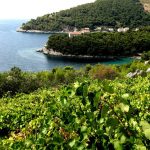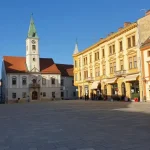April the 22nd, 2023 – Could the Republic of Croatia be powered entirely by renewable resources/energy by the year 2030? Some experts truly believe that this could be the case.
As Darko Bicak/Poslovni Dnevnik writes, by the year 2030, Croatia could get almost all of its energy from renewable sources, according to an analysis presented by the Croatian Renewable Energy Sources Association (OIEH). The investments required to reach these energy goals stand at around one billion euros annually.
Of this huge sum, 500 million euros would be needed for the construction of solar and wind power plants, 300 million for the rehabilitation, modernisation, reconstruction, replacement and digitisation of the country’s transmission and distribution network elements, and 200 million for storage technologies.
The above analysis is based on detailed modeling of the evolution of electricity production and consumption and on numerous simulations of the operation of the Croatian power system in different time frames. It also suggests ways to accelerate the transformation of the power system to strengthen resistance to various crises.
According to the OIEH, which is headed by director Maja Pokrovac, based on current consumption and its growth trend, as well as the currently required import of electricity, the analysis shows a possible future energy picture for Croatia in 2030 with 100 percent renewable energy.
“The annual electricity consumption of 21 to 23 TWh per year would be met by the production of electricity mainly from solar and wind power plants in the country. In January 2030, according to this scenario, Croatia would have 2,500 MW of wind farms that produce 6 TWh of electricity per year. It would also have 2,500 MW of solar power plants that produce 3 TWh of electricity annually. We’d also develop 400 MW in the form of other projects of renewable energy sources such as biomass, biogas and geothermal power plants, which would produce 2 TWh of electricity per year,” according to the OIEH. They add that in the year 2030, with the average production of hydroelectric power plants of 6344 GWh, other renewable energy sources would produce around 17 TWh, or primary energy of 42 TWh.
This is equal to the production of electricity from 4.2 million tonnes of natural gas or 3.1 million tonnes of liquefied gas, 3.6 million tonnes of oil, or 5.9 million tonnes of hard coal, which represents about 42% of the nation’s current primary energy consumption. The completion of the construction of the Senj2/Kosinj hydropower system with a capacity of 412 MW is also expected by 2029, with an increase in the annual production of the Senj hydropower system by about 220 GWh.
By building new wind and solar power plants with variable production, it will be necessary to build new flexibility resources for balancing system services on the production side and consumption side by 2030. These are new reversible hydropower plants with a capacity of +600/-600 MW, annual consumption of around 2.5 TWh and production of non-renewable 1,875 TWh of electricity.
New batteries will also be needed for storage services and balancing system services. The country will also need stable and flexible electrolysers for the production of hydrogen, which would store surpluses in the system during large-scale production of hydroelectric power plants, wind power plants, and solar power plants. Of course, as the association states, an essential condition for this kind of energy picture in the year 2030 is the development of the transmission and distribution network. Special mention should be made of the development of a new double transmission line of 400 kV, transmission capacity of about 2500 MW, between Dalmatia and northwestern Croatia.
With all of the above, it would be the best scenario of the electric power development strategy in the medium term, which is based on 100% RES, and which requires large investments, but gives low operating costs (electricity prices) in terms of operation.
According to this analysis, in 2030, by categories of available energy, renewable energy sources participate with 68.7%, non-renewable with 20.2% and the Krsko nuclear power plant (which has a Croatian share of 50%) with 11%. The exchange balance is zero, that is, the electricity balance would be completely balanced. According to this scenario, Croatia would not need imports at all.
For more, check out our news section.









